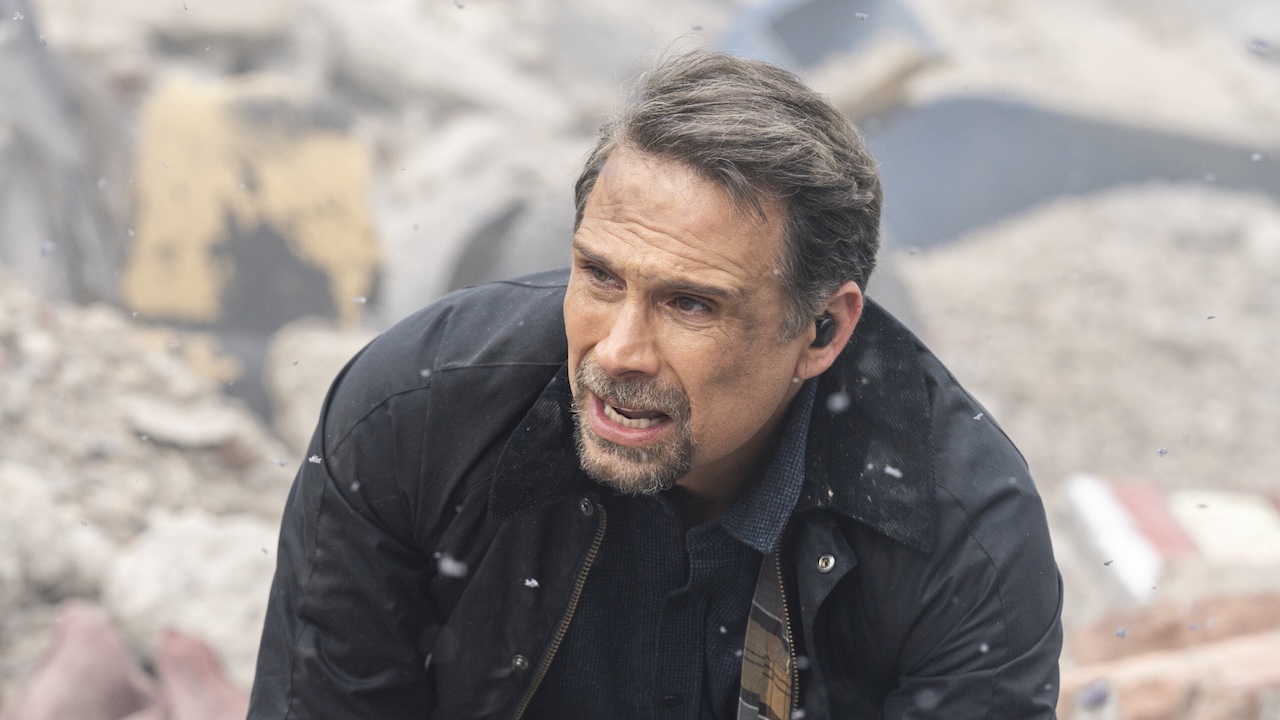A Guide To The Total Recall You Didn't See

No film is ever able to get through development, production and editing without at least some changes. Some are radical – like changing major plot points, locations, or characters – while others are minute – like changing aesthetics or lines of dialogue – but the point is that the movies you watch are not based on first drafts.
But Len Wiseman’s Total Recall seems like a whole new breed. Based on the months and months of news and updates about the production that were reported on our site, not to mention a trip to the set and interviews with the cast and crew, it would seem the new science-fiction film that was released this past weekend underwent a number of big changes and shifts that have possibly altered the way the movie is meant to be seen and interpreted. So what could Total Recall really have been?
Katey and Eric have dug through all of the news, interviews and materials they could find to uncover four big changes Wiseman's new movie underwent during development, production and editing that ended up changing the final product in major ways. What was the original name of The Colony? How could the villainous Cohaagen have been different? Where could all these questions potentially be answered in the future? Check it out below!
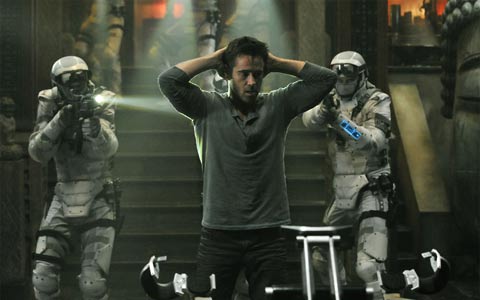
When Did It Go From New Asia To The Colony?
When we had a chance to visit the set of Total Recall last year, we were guided through the movie universe’s two areas of civilization, the United Federation of Britain and New Asia, as well as the transportation system that that links the two together: The China Fall. People who saw the movie this past weekend, though, know that’s not the case in the theatrical cut. While the UFB was able to keep its name, New Asia was retitled “The Colony” and “China Fall” was renamed “The Fall.” It was an odd change for the production to make, particularly because the look of The Colony is very much inspired by Asian architecture and culture. According to Wiseman, the principal reason why this was changed was because of pressure from the studio and because they wanted to make the Colony feel more multi-cultural.
“It was one of the concerns of the studio about being so specific about… it was slanting too much to where we were saying that was the entire culture, and it’s not,” Wiseman said in a recent interview with us. “It’s meant to be a melting pot of an entire society… it’s two surviving zones and the working class is a combination, a melting pot, of many different races and cultures and such. It also informs why the architecture is a mix and blend of everything. And it seemed like it was too specific.”
Funny enough, in the scene where Doug Quaid goes to his deposit box you can actually see that the name of his bank is “The First Bank of New Asia.” Perhaps the area was renamed in the movie universe as well?
Your Daily Blend of Entertainment News
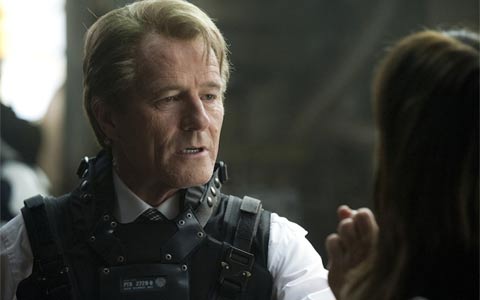
What Else Could We Have Seen From Bryan Cranston?
It takes so long for Bryan Cranston to actually appear onscreen in Total Recall that you honestly kind of wonder why Wiseman cast him-- why promise Walter White if you only get him in a few scenes? But even after the character appears, he remains kind of baffling, with a weirdly half-paternal attitude toward Quaid-- who, it turns out, was once his protege-- and another oddly strained relationship with Kate Beckinsale, who we learn has basically spent the entire movie directly disobeying Cohaagen's orders when she tried to kill Quaid over and over again. There's one moment where Cohaagen leaves a room and taps Lori's ass briefly, in a kind of sexual harassment way that starts to indicate why she dislikes him so much-- except it never happens again, so you start to wonder if you were dreaming it.
Turns out all these inconsistencies in Cohaagen aren't necessarily Cranston's fault, but once again Wiseman's, as he encouraged Cranston to play the character a few difference ways on the set, and chose among them in post. That means that there could be several versions of Cohaagen out there, and not only that, but one consistent version of the character that Wiseman just failed to include. It's not uncommon for an actor to provide a variety of line readings on the set, of course, but whatever Cranston was bringing on set, it doesn't translate through in any meaningful way in the film. Cohaagen's role in the new Total Recall is a letdown for a lot of reasons, from Cranston's insane wig to his lack of screen time, but it sounds like we missed out on seeing a legitimate and well-thought performance from Cranston, entirely because it was left to be determined in the editing room, and Wiseman dropped the ball.
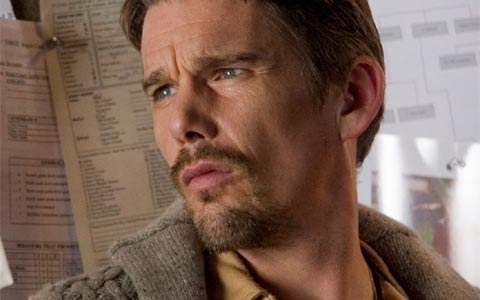
What Happened To Ethan Hawke?
If you were paying attention when Ethan Hawke's cameo in Total Recall was revealed last year, you might have been surprised that Hawke was nowhere to be found in the final product. It was said by producer Neal Moritz to Screen Rant that Hawke was what Doug Quaid/Carl Hauser looked like before his memory was erased, and Hawke himself told Vulture that the Academy Award-nominated actor even had a five-page monologue, but none of that ended up in the final product. when we spoke with Wiseman at a recent press day for the film we took the opportunity to ask about the situation, and apparently it was a pacing issue that kept the scene out of the theatrical cut.
“He was very cool about it,” Wiseman said. “There’s this idea that I’m trying that I want to take a shot at, and I’ve been wanting to work with him for a while…Many scenes are cut out of a movie as you go on, but when it involves an actor that we all know it’s a drag because I was looking forward to it as well. In the context of the whole film it just wasn’t fitting properly.”
The problem is that the Hawke cameo may have actually answered a few questions. It was unusual that Kate Beckinsale’s character, Lori, didn’t recognize who Quaid really was, but completely changing the man’s face would go a long way to explain that. It’s possible that it was meant to be Hawke leaving the video message for Farrell, telling him the truth about who he is and Cohaagen’s plan, and that the whole thing was just reshot to avoid confusion. Wiseman did tell us that Hawke’s cameo would appear on the film’s Blu-ray, which leads us to our next section…
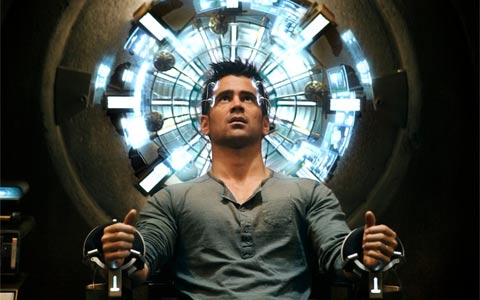
Is The Ending Supposed To Be Obvious Or Ambiguous?
Wiseman seems convinced, in a way that doesn't really match up with what's in his film, that the ending of his Total Recall is as ambiguous as the Verhoeven original, if not more so. Talking to Slashfilm, when interviewer Germain Lussier suggested his version wasn't as ambitious, Wiseman looked genuinely surprised, and told him "It was very important to me that if you go through it and analyze it to death, it survives on both plans. There's enough to support that it's reality and to support that it's his fantasy."
If you saw the new Total Recall, you probably agree that there's really not much to defend the idea that it's a fantasy-- even the final fake-out ending just turns into another unambiguous fight scene. But Wiseman's certainty might be more related to what's left on the cutting room floor. Talking to Collider Wiseman teased a director's cut of the film that will appear on the Blu-Ray, including 17 minutes of extra footage, much of which includes "scenes where it really comes into question about questioning his whole reality." It seems likely that Wiseman felt confident enough to cut them and assumed the audience would follow his train of thought, and when we finally get a look at the director's cut, we might all be able to get a sense of that ambiguity he's talking about.
Staff Writer at CinemaBlend

